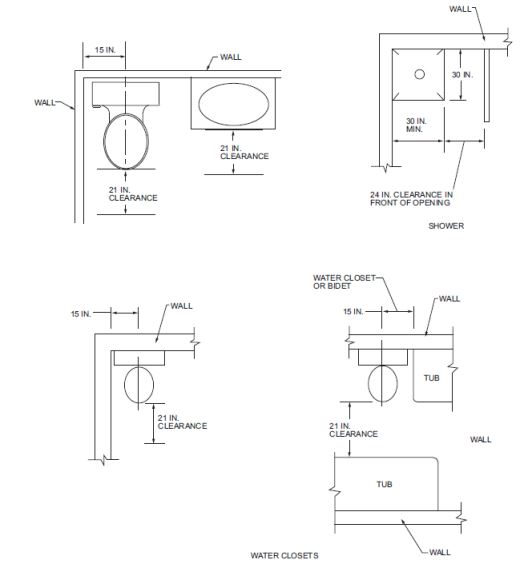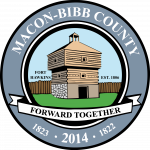Plumbing Code
The following are common questions asked by homeowners and contractors seeking guidance on the prescriptive requirements of the International Plumbing Code, as adopted and amended by the State of Georgia.
The State of Georgia has adopted the 2018 edition of the International Plumbing Code (2018 IPC).
The 2018 International Plumbing Code applies to both residential and commercial projects since the plumbing requirements within the 2018 International Residential Code have been omitted through the state construction amendment process.
The frost depth throughout the county is 18” (eighteen inches).
Yes. The inspection must be scheduled when the piping is installed within the trench and prior to covering. During this inspection, our inspection staff will verify the following per 2018 IPC Section 309:
- The piping is supported throughout its entire length, with the piping having slope or fall for drainage according to the code
- The ends of the piping must be plugged and on test at time of inspection (See FAQ Question #6)
- The trench supporting the piping must be free of trash, debris and rocks, with the piping bearing on sand or fine gravel
- When excavating for the piping and rocks are encountered, the rocks must be at least 3” (three inches) below the piping
- The trench must be backfilled in 6” (six inch) layers and compacted without disturbing the fall or slope of the piping
The 2018 International Plumbing Code recognizes two (02) test methods for testing the drainage and vent piping:
- Air test: A minimum of 5 psi for not less than 15-minutes (Not allowed for plastic piping)
- Water test: A 10-foot head of water for not less than 15-minutes
(2018 IPC Sections 312.2 & 312.3)
No. The 2018 International Plumbing Code prohibits the use of air to test plastic piping, since this structurally damages the piping and may cause it to explode. (2018 IPC Section 312.3)
Gravity sewer tests shall consist of plugging the end of the building sewer piping at the point of connection with the septic tank, grease interceptor, or public sewer and filling the building sewer piping with water. The testing must be done with not less than a 10’ (ten foot) head of water and maintaining such pressure for 15 minutes. (2018 IPC Section 312.6)
No. The 2018 International Plumbing Code States the following:
2018 IPC Section 301.7 Conflicts. In instances where conflicts occur between this code and the manufacturer’s installation instructions, the more restrictive provisions shall apply.
Since 2018 International Plumbing Code Section 312.3 prohibits air tests for plastic piping the code governs over the manufacturer’s installation instructions, since it is the more restrictive provision.
When building a shower onsite instead of buying a pre-made unit the liner must be inspected to verify that it is watertight. The liner, per 2018 International Plumbing Code Section 421.5 can be:
- PVC sheets
- Chlorinated Polyethylene (CPE) sheets
- Sheet lead
- Sheet copper
- Sheet-applied, load bearing, bonded, water-proof membranes meeting TCNA A118.10
- Liquid-type, trowel-applied, load bearing, bonded, water-proof material meeting TCNA A118.10
The test shall have the drain plugged and the liner filled with a minimum of 2” (two inches) of water without leakage for a minimum of 15-minutes.
The floor of the shower must be sloped to drain.
The 2018 International Residential Code, which applies to single-family dwellings, two-family dwellings, and townhomes requires that plumbing fixtures meet the following minimum dimensions:

The 2018 International Residential Code governs for the location of the plumbing fixtures; however, the 2018 International Plumbing Code is used for the plumbing system installation.
(See 2018 IRC Section R307.1)
Yes. An Air Admittance Valve (AAV) is a mechanical vent installed on the vent system of a building to allow fresh into the drainage system through negative pressure to maintain a trap seal. Some examples of these products are manufactured by but not limited to Oatey, Rectorseal, and Studor.
The AAV’s must be installed per the 2018 International Plumbing Code and the manufacturer’s installation instructions, with at least one (01) vent stack extending through the roof. (2018 IPC Section 918.7)
If the water pressure within a building exceeds 80 psi an approved water pressure reducing valve shall be installed.
A significant amount of water can be wasted by a person while waiting for hot water to arrive at the at the plumbing fixture. In addition to being an inconvenience, the costs for the water, for the energy to heat the water and for the disposal of the water are literally going down the drain. There will be less waste and inconvenience at the fixture where the source of hot water is located near to the fixture.
The 2018 International Plumbing Code requires that all plumbing fixtures using tempered or hot water be within 50’-0” (fifty feet) of the source. Meaning that the total length of piping from the water heater to the fixture cannot exceed 50’-0” (fifty feet).
As an example: A 50’-0” (fifty foot) length of ½” (half inch) copper tube contains approximately 0.6 gallons of water. A residential lavatory is limited to a flow rate of 0.8 gpm (gallons per minute) Therefore, if the entire 50’-0” (fifty feet) length of tube is at ambient temperature, the fixture user would have to wait approximately 1.2 minutes for hot water to arrive at the fixture.
Options to resolve this issue:
- Install a recirculating pump
- Install a water heater closer to the further fixture served
(2018 IPC Section 607.2)
No. PVC is not a recognized piping type for use inside a building for the water distribution system.
(2018 IPC Section 605.4 & Table 605.4)
Where plumbing fixtures are installed on a floor with a finished floor elevation below the elevation of the manhole cover of the next upstream manhole in the public sewer, such fixtures shall be protected by a backwater valve installed on the building drain. This meant to protect the building from a blocked or overloaded public sewer backing up into the building.
(2018 IPC Section 714.1)
No. Those are reviewed, permitted, and inspected by the Georgia Department of Public Health.
Office Location: 171 Emery Highway, Macon
Phone: (478) 745-0411
Website: https://northcentralhealthdistrict.org/macon-bibb-county-health-department/
Yes, but only for the point of connection between the potable water and the backflow preventor. A backflow preventor protects the potable water system from contaminates and chemicals which may be used in the landscaping.
No. The installation of backflow preventors are designed to protect the potable water system from chemicals, contaminates, and other toxins that may cause a health issue. Their installation is regulated by the International Plumbing Code, and the devices require periodic testing and maintenance to ensure that they are functioning correctly. Only a licensed Plumbing Contractor can make this connection.
Once the backflow prevention has been installed at the point of connection between the potable water source and the landscaping irrigation piping, the landscaper can complete the underground piping.
Click here to download the PDF version of this page
